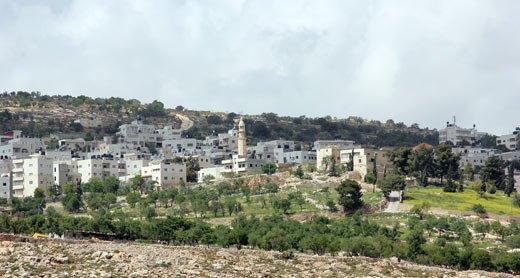The Invisible Walls of Occupation: Burqah, Ramallah District, A case study
October 28, 2014

We think a thousand times before we build, go on vacation, study, work, trade, or grow crops. It’s not because of laziness, or inability. It’s because of concerns about the obstacles, about harassment and attacks by the Israeli military or by settlers. It’s as if we live in a big prison, with invisible walls, as a result of the restrictions imposed on us.
From Lana Kan'an's testimony, taken by Iyad Hadad on 21 March 2014
This report concerns the village of Burqah, Ramallah District. A rather unremarkable village, Burqah has never taken center stage in the fight against the occupation, and has not been subjected to extreme punitive measures. In fact, we chose to focus on Burqah precisely because it is unexceptional, as a case in point demonstrating what life under the occupation is like for residents of Palestinian villages. It is a small, picturesque village, surrounded by fields. Like many other villages, it endures severe travel restrictions which isolate it from its surroundings. It is also subject to massive land-grabs and stifling planning, all of which have turned it into a derelict, crowded and backward village with half its population living at or below the poverty line.
Burqah residents may live in Area B, but despite the illusion created when powers were transferred to the Palestinian Authority, Israel’s full control of Area C means it has the power to influence many aspects of life in Areas A and B, even allowing it to freeze the day-to-day routine of Palestinians living in those areas:
Road Closures: Early in the second Intifada, the Israeli military closed the main road from Burqah to Ramallah. The road has remained closed ever since, transforming the short trip to Ramallah from a few minutes’ ride into a 45-minute journey through winding bypass roads ill-equipped to accommodate substantial volumes of traffic. The road closures have converted Burqah into an isolated, remote village, despite its geographic proximity to Ramallah. Road closures have also limited access by Burqah residents to all the services provided in Ramallah, the district’s major urban center: employment, medical services, shopping centers, institutions of higher education and leisure facilities.

remainder: http://www.btselem.org/publications/201410_invisible_walls_of_occupation

